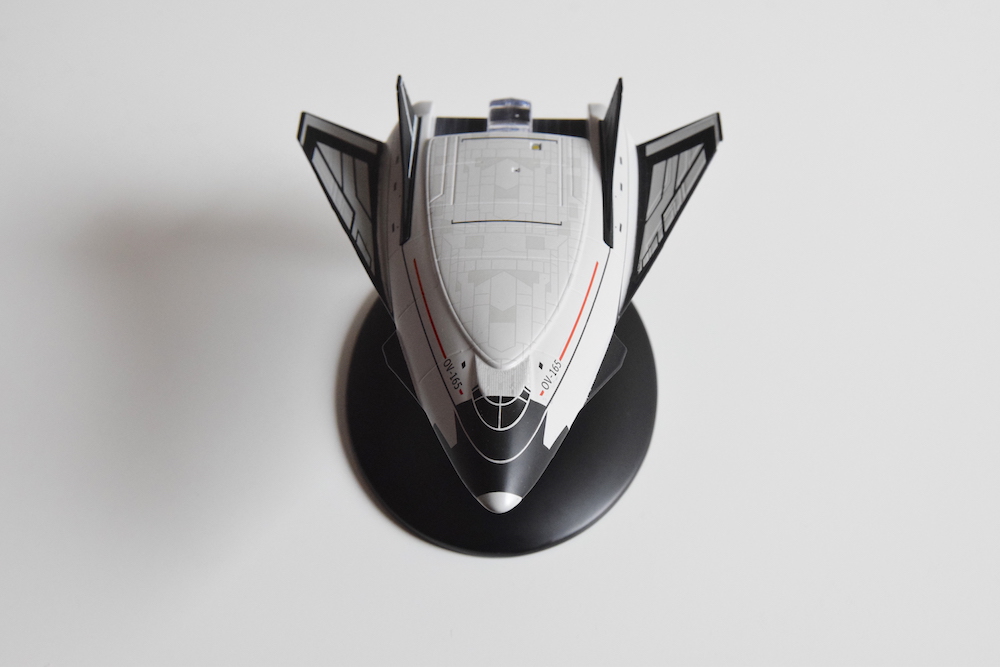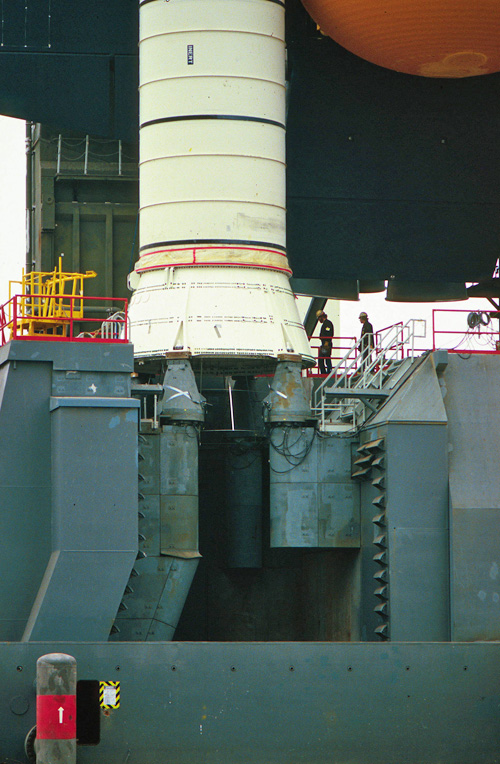
Īdditionally, the existing 5,500-foot (1,700 m) runway and overruns on the North Base flightline were lengthened to nearly three miles (16,000 ft) to accommodate end-of-mission landings. Additional modifications or improvements included liquid hydrogen and liquid oxygen storage tanks, a payload preparation room, payload changeout room, a new launch tower with escape system for the shuttle crew members, sound suppression system and water reclamation area and a Shuttle Assembly Building were added to the original complex. The original Mobile Service Tower (MST) was lowered in height and two new flame ducts were added for the shuttle's solid rocket boosters. Over $4 billion were spent on the new Space Shuttle modifications. Space Shuttle Įnterprise at SLC-6 in launch configuration in February 1985

SLC-6 consolidated the VAB (stacking) and LC-39 (launching) functions, while a processing facility, located at North Base, would have handled the vehicle processing, along with providing a Mate-Demate Device, and a 13,000 ft (4,000 m) runway for Shuttle landings. KSC had the Orbiter Processing Facility, Shuttle Runway facility, Mate-Demate Device (for loading the Orbiter on the Shuttle Carrier Aircraft), the Vehicle Assembly Building, and Launch Complex 39. There were significant layout differences between the shuttle launch complexes at KSC and SLC-6 at Vandenberg. After Defense Department officials testified that polar orbits could not be achieved by launching from Kennedy Space Center in Florida, the Congress initiated construction of. Use of the existing and partially constructed Titan III facilities at SLC-6 would reduce building costs for the shuttle launch complex.Ī Senate report summarized: "The Air Force originally justified the expenditure of such SLC-6 funding on the basis of a need to launch high-priority military payloads into polar orbits.Florida shuttle launches to polar orbit would necessitate overflying South Carolina, and the discarded external tank would overfly Canada and Russia, and.Florida shuttle launches to polar orbit would have entailed a large payload penalty.


There were several reasons for using SLC-6: Use of SLC-6 was approved in 1975, and re-construction of the former MOL launch facility occurred between January 1979 and July 1986 as SLC-6 was rebuilt to accommodate the space shuttle. In 1972, Vandenberg AFB was chosen as the western launch site for Air Force shuttle launches. With plans of launching civilian and military equatorial space shuttle flights from Kennedy Space Center (KSC) and military polar orbit flights from Vandenberg, NASA and the Air Force looked at different sites for launching the shuttle, finally deciding upon SLC-6, due to its dedicated crewed spaceflight role that was left over from the canceled MOL/Titan program. After significant construction work was completed, the MOL program was cancelled on June 10, 1969, so further work on SLC-6 stopped as the facility was placed in mothball status. With the purchase of the base, the Air Force started construction of the SLC-6 facility on March 12, 1966, to support launches of a modified Titan III for the Manned Orbiting Laboratory (MOL). There was also the Point Arguello LORAN station, deestablished December 31, 1979. In addition to the ranch, the Point Arguello lighthouse was based there, which in 1967 was replaced by an automated light. Air Force in the mid-1960s under the law of eminent domain. SLC-6, part of Vandenberg's "South Base," was originally part of the Sudden Ranch, prior to its purchase by the U.S.

Avoiding these would require major inefficient maneuvering, greatly reducing payload capacity. These orbits are difficult to reach from Cape Canaveral Space Force Station, where launches must fly eastward due to major population centers to both the north and south of Kennedy Space Center.
#Space shuttle enterprise vafb full
Launches from Vandenberg fly southward, allowing payloads to be placed in high-inclination orbits such as polar or Sun-synchronous orbit, which allow full global coverage on a regular basis and are often used for weather, Earth observation, and reconnaissance satellites. On April 24, 2023, SLD 30 announced that they had leased SLC-6 to SpaceX. The pad sat vacant for a few months after the launch of NROL-91 on September 24, 2022. The pad was subsequently used for several Athena rocket launches before being modified to support the Delta IV launch vehicle family, which used the pad since 2006. The complex was later rebuilt to serve as the west coast launch site for the Space Shuttle, but went unused due to budget, safety and political considerations. The site was originally developed for Titan IIIM rockets and the Manned Orbiting Laboratory, but these were cancelled before construction of SLC-6 was complete. Space Launch Complex 6 ( SLC-6, pronounced "Slick Six") at Vandenberg Space Force Base in California is a launch pad and support area.


 0 kommentar(er)
0 kommentar(er)
